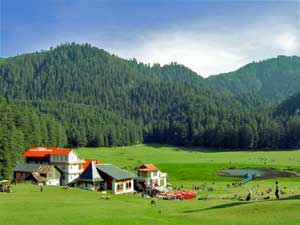|
Popularly known as the Devbhumi – "Land of the Gods",
Himachal Pradesh is a beautiful hill state in northern India
nestled in western Himalayas. The state is landlocked with the
Tibetan plateau to the east, Jammu and Kashmir to the north,
and the Punjab to the west. However the state stands apart
from its neighbours in terms of its sheer topographic
diversity and breathtaking pristine natural beauty. From vast
tracts of high-altitude Trans-Himalayan desert to dense green
deodar forests, from apple orchards to cultivated terraces,
from snow capped high Himalayan mountain ranges to snow fed
lakes and gushing rivers.
Himachal is situated in the western Himalayas. Covering an
area of 55,780 kilometres (34,660 mi), Himachal Pradesh is a
mountainous state with elevation ranging from about 350 metres
(1,148 ft) to 6,000 metres (19,685 ft) above the sea level.

Lahaul, Himachal Pradesh.The drainage system of Himachal is
composed both of rivers and glaciers. Himalayan rivers criss-cross
the entire mountain chain. In fact the rivers are older than
the mountain system. Himachal Pradesh provides water to
both the Indus and Ganges basins. The drainage systems of the
region are the Chandra Bhaga or the Chenab, the Ravi, the Beas,
the Sutlej and the Yamuna. These rivers are perennial and are
fed by snow and rainfall. They are protected by an extensive
cover of natural vegetation.
There is great variation in the climatic conditions of
Himachal due to extreme variation in elevation. The climate
varies from hot and sub-humid tropical in the southern tracts
to cold, alpine and glacial in the northern and eastern
mountain ranges with more elevation. The state has areas like
Dharamsala that receive very heavy rainfall, as well as those
like Lahaul and Spiti that are cold and almost rainless.
Broadly Himachal experience three seasons; hot weather season,
cold weather season and rainy season. Summer lasts from mid
April till the end of June and most parts become very hot
(except in alpine zone which experience mild summer) with the
average temperature ranging from 28 °C (82 °F) to 32 °C (90
°F). Winter lasts from late November till mid March. Snowfall
is common in alpine tracts (generally above 2,200 metres
(7,218 ft) i.e. in the Higher and Trans-Himalayan region).
|

